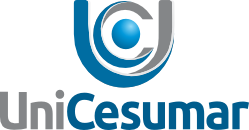PHYSICAL, CHEMICAL AND MICROBIOLOGICAL STUDIES ON THE EFFICIENCY OF TREATMENTS OF EFFLUENT FROM FOWL ABATTOIR
Keywords:
Fowl Abattoir Effluents, Physical, Chemical and Microbiological Parameters, Treatment Lake System.
Abstract
Fowl industrialization requires a high quantity of drinkable water due to the several procedures employed. The effluent contains a high load of organic matter and solids requiring adequate treatments to dispose of in the receiving water body. The effluent should comply with parameters required by the Brazilian Council for the Environment (CONAMA) so that irreparable damage to the environment may be avoided. Current analysis evaluated the physical and chemical parameters, such as pH, BOD5, COD, nitrogen and phosphorus, and microbiological parameters for total and thermotolerant coliforms of effluents from the fowl abattoir. Two samples were collected per month, in the afternoon, during six months for entrance (first treatment lake - anaerobic lake) and exit (last lake – polishing lake) system. Results showed that there was no adequate removal for microbial load when entrance and exit rates in the system of treatment were compared. Physical and chemical analyses, albeit with a 90% removal rate, did not reach maximum rates permitted by environmental legislation for effluents to be disposed of into the receiving water body. The fowl abattoir requires a more adequate structuring of its treatment lake systems so that the receiving water body would not be degraded.
Published
2016-07-01
Section
Environment
A Revista se reserva o direito de efetuar, nos originais, alterações de ordem normativa, ortográfica e gramatical, com o intuito de manter o padrão culto da língua, respeitando, porém, o estilo dos autores. As opiniões emitidas pelos autores são de sua exclusiva responsabilidade.
Os direitos autorais pertencem exclusivamente aos autores. Os direitos de licenciamento utilizado pelo periódico é a licença Creative Commons Attribution Creative Commons Atribuição 4.0 Internacional. São permitidos o compartilhamento (cópia e distribuição do material em qualquer meio ou formato) e adaptação (remixar, transformar, e criar a partir do trabalho, mesmo para fins comerciais), desde que lhe atribuam o devido crédito pela criação original.
Creative Commons Atribuição 4.0 Internacional. São permitidos o compartilhamento (cópia e distribuição do material em qualquer meio ou formato) e adaptação (remixar, transformar, e criar a partir do trabalho, mesmo para fins comerciais), desde que lhe atribuam o devido crédito pela criação original.
Os direitos autorais pertencem exclusivamente aos autores. Os direitos de licenciamento utilizado pelo periódico é a licença Creative Commons Attribution
 Creative Commons Atribuição 4.0 Internacional. São permitidos o compartilhamento (cópia e distribuição do material em qualquer meio ou formato) e adaptação (remixar, transformar, e criar a partir do trabalho, mesmo para fins comerciais), desde que lhe atribuam o devido crédito pela criação original.
Creative Commons Atribuição 4.0 Internacional. São permitidos o compartilhamento (cópia e distribuição do material em qualquer meio ou formato) e adaptação (remixar, transformar, e criar a partir do trabalho, mesmo para fins comerciais), desde que lhe atribuam o devido crédito pela criação original.

